

1.The CB Scheme (Global)
The CB scheme is the acronym for the Certification Bodies' Schemer, it is a set of global mutual recognition system which is established by IECEE. Based on the IEC safety and electromagnetic compatibility (EMC) standards for relevant electronic and electrical equipment approved by IECEE, the CB system has realized mutual recognition of test results for 19 categories of electrical products including batteries, household appliances, information electrical equipment, and medical electrical equipment.
So far, there are 55 certification institution from 49 countries in this international system. Each country's national certification body (NCB) have formed a multilateral agreement-- whereby a manufacturer or company can obtain national certification from member countries in the system by using a CB certification issued by any NCB.
As a result, people who apply for CB certification are exempted from repetitive testing during the application process and are more quickly recognized by other member countries, thus gaining access to their markets.
2.HACCP ( Canada, Thailand, Vietnam, India, Australia, New Zealand, Iceland, Denmark, Brazil, etc.)
HACCP stands for Hazard Analysis Critical Control Point. Ensuring the safety of food during the production, processing, manufacturing, preparation and consumption of food is a scientific, reasonable and systematic approach in hazard identification, evaluation and control. It is widely used in aquatic products, poultry meat, canned food, quick-frozen vegetables, fruit and vegetable juice, cosmetics, catering and other industries. Most of the countries listed above enforce HACCP compulsively.
3.The CE marking (European Union)
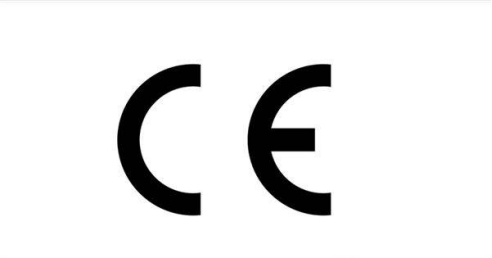
The CE marking is a safety conformity mark rather than a quality conformity mark. These are the "principal requirements" that form the core of the European Directives. In the EU market, the CE marking is a compulsory certification mark. Whether it is a product produced by an enterprise within the EU or a product produced in another country, if it wants to circulate freely in the EU market, the CE marking must be affixed.
The meaning of the CE mark is: the product affixed with the CE mark has passed the corresponding conformity assessment procedure and/or the manufacturer's declaration of conformity, complying with the relevant EU directives. And the mark is used as a pass for the product to be allowed to enter the European Community market.
If a product that has been affixed with the CE mark enters the market and is found not to meet the safety requirements, it shall be ordered to withdraw from the market. The products that continue to violate the relevant CE mark regulations of the directive, will be restricted or prohibited from entering the EU market or forced to withdraw from the market.
The CE marking is not a quality mark, it is a mark representing that the product has complied with European safety/health/environmental protection/sanitary standards and directives. All products sold in the EU must be marked with the CE marking.
4.RoHS (European Union)
ROHS is an acronym for the Restriction of Hazardous Substances, also known as the 2002/95/EC Directive. It is utilized to limit the use of certain hazardous materials in electrical and electronic products
It is a mandatory standard legislated by EU, which is mainly used to regulate the material and process standards of electrical and electronic products, making it more conducive to human health and environmental protection. The purpose of this standard is to eliminate the six substances of lead, mercury, cadmium, hexavalent chromium, polybrominated biphenyls and polybrominated diphenyl ethers in electrical and electronic products, and it mainly stipulates that the content of lead should not exceed 0.1%.

RoHS is aimed at all electrical and electronic products that may contain the above six hazardous substances in the production process and raw materials, mainly including: white household electrical appliance such as refrigerators, washing machines, microwave ovens, air conditioners, vacuum cleaners, water heaters, etc., black household electrical appliance such as audio and video products , DVD, CD, TV receivers, IT products, etc.; power tools, electric electronic toys, medical electrical equipment.
5.BSI (UK)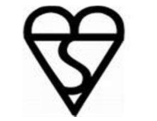
BSI is acronym for British Standards Institution. The British Standards Institute is the earliest national standardization organization in the world. It is not controlled by the government but has strong support from the government. BSI develops and revises British Standards and promotes their implementation.
BSI is an international-standard service provider integrating five complementary businesses including standard research and development, standard technical information provision, product testing, system certification and commodity inspection services. The main types of certification are: "Kite" mark certification or BS certification mark, safety mark certification.
The following products apply for BSI certification for domestic factories: household appliances (white goods & black goods); consumer electronics; controller switches; IT equipment; lamps; wires and cables.
6.FCC (US)
FCC is the acronym for Federal Communications Commission. It is the mandatory certification of EMC in the United States, mainly for 9KHz-3000GHz electronic and electrical products, especially the radio interference of wireless communication equipment and systems, and certification systems and organizational management systems, etc.
Products regulated by the FCC such as personal computers, CD players, copiers, radios, fax machines, video game consoles, electronic toys, televisions, and microwave ovens.
These products are divided into two categories: CLASS A and CLASS B according to their usage. Class A is for commercial or industrial use, and Class B is for household use. FCC has three certification modes for different products: Verification, Declaration of Conformity (DOC) and Certification. Different certification modes require testing laboratories to obtain FCC accreditation, and there are different application, testing and declaration requirements.
7.UL (US) 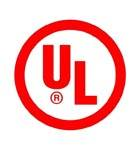
UL is an acronym for Underwriter Laboratories Inc. It is the most authoritative in the United States and the largest non-governmental organization engaged in safety testing and appraisal in the world. It is mainly engaged in product safety certification and business safety certification. Its ultimate goal is to obtain products with a certain level of safety for the market and contribute to the guarantee of personal health and property safety.
It uses scientific testing methods to study and determine whether various materials, devices, products, equipment, buildings, etc. are harmful to life and property and the degree of harm; determine, write, and issue corresponding standards and help reduce and prevent damage to life. UL certification is a non-compulsory certification in the United States, mainly for the testing and certification of product safety performance, and its certification scope does not include the EMC (electromagnetic compatibility) characteristics of the product.
8.FDA (US)
FDA is an acronym for U.S. Food and Drug Administration. It is an international medical audit authority, authorized by the U.S. Congress--the federal government. And it’s the highest law enforcement agency specializing in food and drug management.
The FDA's role is to ensure the safety of food, cosmetics, medicines, biological agents, medical devices, and radiation products produced or imported into the United States. Food exported by foreign institutions to the United States must be reported to the FDA 24 hours before arriving at the U.S. port, otherwise it will be refused and detained at the port of entry.
9.A/C-Tick (Australia)

A/C-Tick is a certification mark issued by the Australian Communications Authority (ACA) for communication equipment. A-Tick certification controls telecommunication products, and C-Tick is an Australian certification for the electromagnetic compatibility of electronic products, which is a mandatory certification for import and export customs. This certificate is required for all electronic products entering Australia.
If one electronic product is applied for A-Tick, it does not need applied for C-Tick separately. Since November 2001, the EMI application of Australia and New Zealand has been merged, if the product is to be sold in these two countries, the following documents must be prepared before marketing for checks at any time by ACA (Australian Communications Authority) or New Zealand (Ministry of Economic Development) authorities.
10.SAA Approvals (Australia)
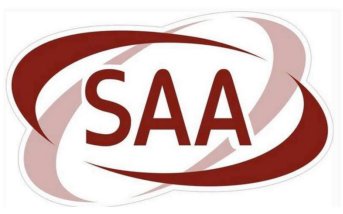
SAA Approvals is accredited by the Joint Accreditation Service of Australia and New Zealand (JAS-ANZ) as a third party certification body to issue certificates for electrical equipment that has proven to comply with the safety requirements of the applicable Australian Standard.
There are two main types of SAA marks, one is form approval and the other is standard mark. Formal certification is only responsible for samples, while standard marks need to be inspected by each factory. At present, there are two ways to apply for SAA certification in China-- passing the CB test or applying directly.
11.PSE (Japan)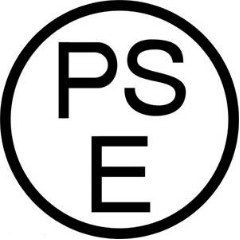
PSE is an acronym for Product Safety of Electrical Appliance & Materials.
It is a mandatory safety certification in Japan, which is used to prove that electrical and electronic products have passed the safety standard test of the Japanese Electrical and Material Safety Law (DENAN Law) or the international IEC standard.
Japan's Electrical Appliances and Materials Control Law has stipulated 498 kinds of products, that is, they should pass the safety certification while entering the Japanese market. Among them, 165 kinds of A-type products should obtain the diamond-shaped PSE mark, and 333 kinds of B-type products should obtain the circular PSE mark.
12. CSA (Canada)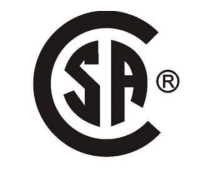
CSA is an acronym for Canadian Standards Association. It is the largest safety certification in Canada and one of the most famous organizations of safety certification in the world. It can provide safety certification for all types of products in machinery, building materials, electrical appliances, computer equipment, office equipment, environmental protection, medical fire safety, sports and entertainment.
CSA has provided certification services for thousands of manufacturers all over the world, and hundreds of millions of products with the CSA logo are sold in the North American market every year.
13.DIN (German)
DIN is acronym for Deutsches Institut für Normung. It is the standardization authority in Germany and participates in international and regional non-governmental standardization organizations as a national standardization organization. It involves various fields such as construction engineering, mining, metallurgy, chemical industry, electrical engineering, safety technology, environmental protection, sanitation, fire protection, transportation, and housekeeping.
14.GS (German)
GS is acronym for Geprufte Sicherheit, meaning “Germany Safety”. GS certification is a voluntary certification based on the German Product Safety Act (GPGS) and tested in accordance with the European Union's unified standard EN or the German industrial standard DIN.
It is a German safety certification mark recognized in the European market. Usually GS certified products have a higher unit price and are more popular, for example, household appliances; sports goods, household electronic equipment, and audio-visual equipment, electrical and electronic office equipment; industrial machinery, experimental measurement equipment; other safety-related products such as bicycles, helmets, ladders, furniture, etc.
The GS mark indicates that the safety of the product has passed the test of a credible independent institution. Although the GS mark is not a legal requirement, it does enable manufacturers to be bound by strict German (European) product safety laws when a product fails and causes an accident.
Therefore, the GS certification mark is a powerful marketing tool that can enhance customers' confidence and desire to buy. Although GS is a German standard, it is recognized by most European countries. And while meeting the GS certification, the product will also meet the requirements of the European Community's CE mark. Unlike CE, there is no legal requirement for the GS certification mark, but because safety awareness has penetrated into ordinary consumers, an electrical appliance with a GS certification mark may have greater competitiveness in the market than ordinary products.
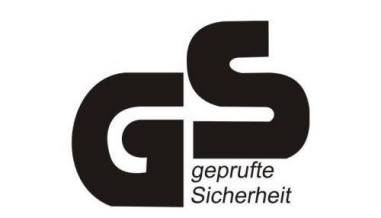
The above are the more common international certifications, it can be seen that each country has different requirements for different goods, because of the special nature of international logistics, all logistic company needs to pay attention to this process. With rich experience in server and IT equipment transport and global service network, 527 Supply Chain can provide customers with high-quality services and one-stop integrated service solutions.
